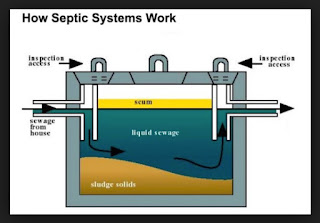Your Septic System and Mother Nature

Nebraska is one of those fortunate states that gets to experience all four seasons every year. Our springs are typically cool and wet, summers hot and dry, crisp falls, and cold, snowy winters. During any one of these seasons, we can experience extreme weather. For instance, the fall of 2018 was extremely rainy and led into a winter that has been colder than we have seen for a while. We have also gleaned quite a bit of snow during the 2018-19 winter as well. Why am I taking the time to tell you this? Your septic system is sensitive to what Mother Nature does. If we have a wet fall or spring and the ground is overly saturated, this can cause problems for your system. Typically, it is the older systems that struggle more during times like these, but we have seen newer systems have problems as well. It all depends on the amount of water a household uses, the soil type your system is placed in, and the amounts of rain (or snow melt) we have received from Mother Na


